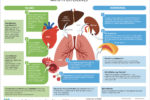Coronary heart disease (CHD) remains the UK’s number one killer, affecting over 2.8 million people and causing almost 100,000 deaths a year.1 This is despite an overall reduction since the 1970’s through the introduction of statins, improved screening and treatment and an increase in smoking cessation. Although many risk factors have to be taken into consideration, an elevated serum cholesterol level, which affects two out of every three UK adults, remains the single biggest modifiable risk factor for CHD.1,2 Dietary intervention should always be first-line treatment with or without statin therapy. However, there is clearly a need for a diet renaissance – providing patients with a diet that is not only realistic, but one that delivers impactful cholesterol-lowering results.

























